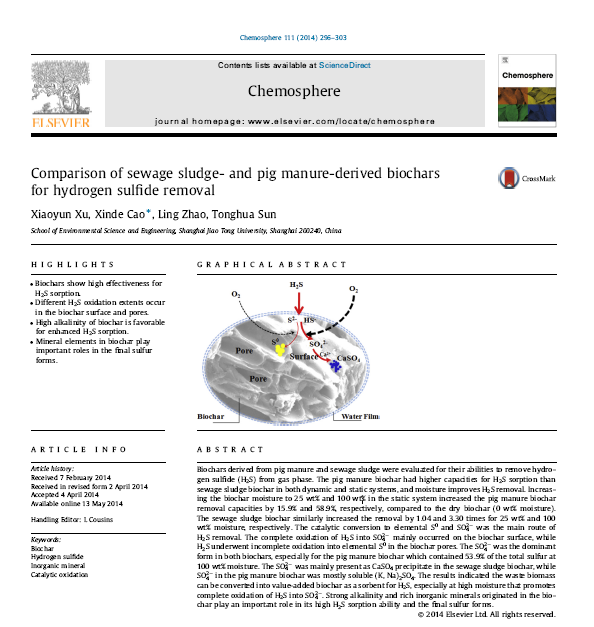Comparison of sewage sludge- and pig manure-derived biochars for hydrogen sulfide removal
2017-11-27
Xiaoyun Xu, Xinde Cao , Ling Zhao, Tonghua Sun
abstract
Biochars derived from pig manure and sewage sludge were evaluated for their abilities to remove hydrogen sulfide (H2S) from gas phase. The pig manure biochar had higher capacities for H2S sorption than sewage sludge biochar in both dynamic and static systems, and moisture improves H2S removal. Increasing the biochar moisture to 25 wt% and 100 wt% in the static system increased the pig manure biochar removal capacities by 15.9% and 58.9%, respectively, compared to the dry biochar (0 wt% moisture). The sewage sludge biochar similarly increased the removal by 1.04 and 3.30 times for 25 wt% and 100 wt% moisture, respectively. The catalytic conversion to elemental S0 and SO42- was the main route of H2S removal. The complete oxidation of H2S into SO42- mainly occurred on the biochar surface, while H2S underwent incomplete oxidation into elemental S0 in the biochar pores. The SO42- was the dominant form in both biochars, especially for the pig manure biochar which contained 53.9% of the total sulfur at 100 wt% moisture. The SO42- was mainly present as CaSO4 precipitate in the sewage sludge biochar, while SO42- in the pig manure biochar was mostly soluble (K, Na)2SO4. The results indicated the waste biomass can be converted into value-added biochar as a sorbent for H2S, especially at high moisture that promotes complete oxidation of H2S into SO42-. Strong alkalinity and rich inorganic minerals originated in the biochar play an important role in its high H2S sorption ability and the final sulfur forms.
